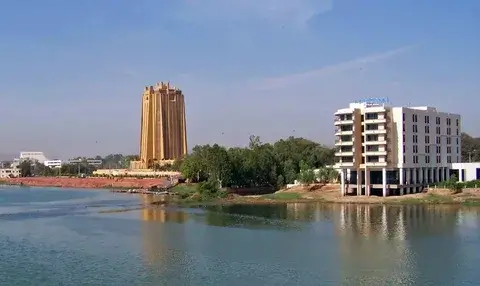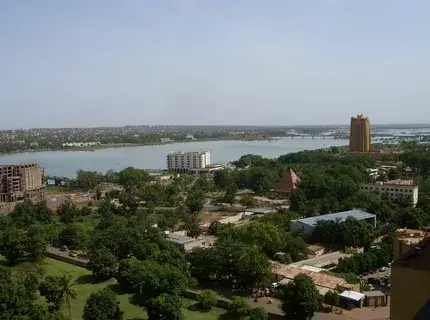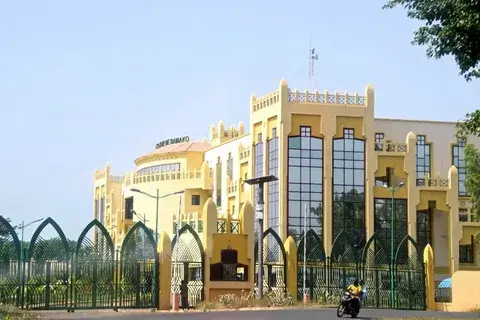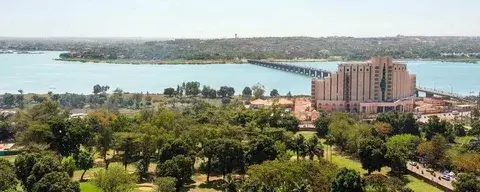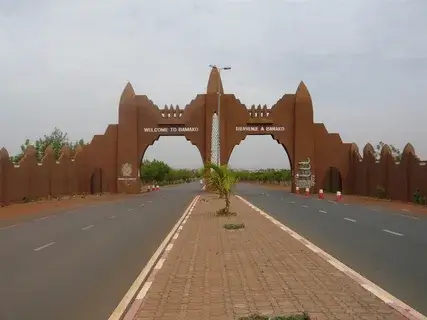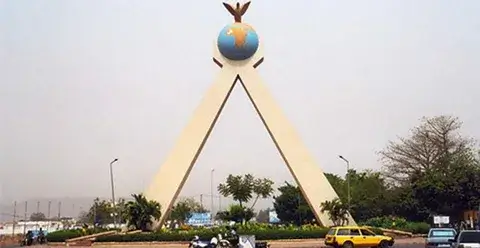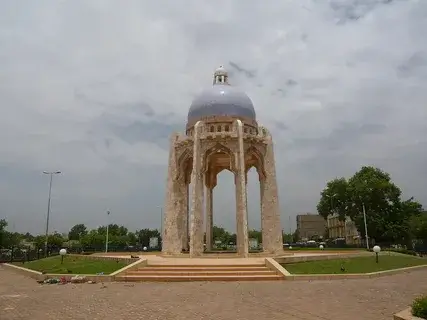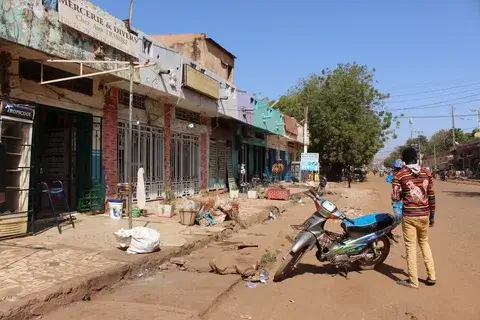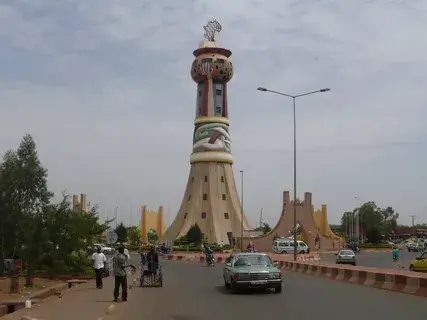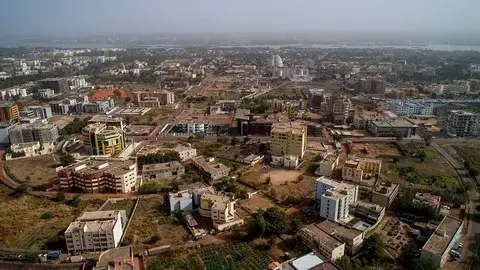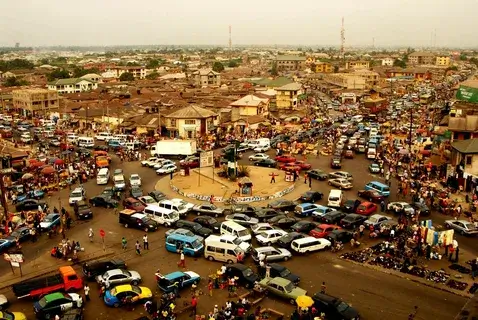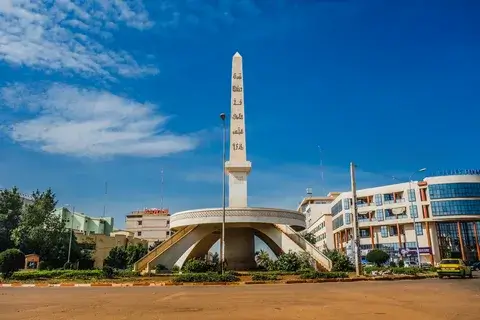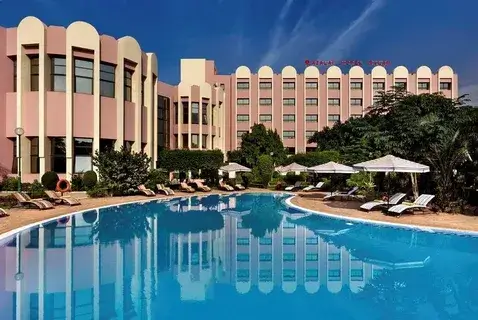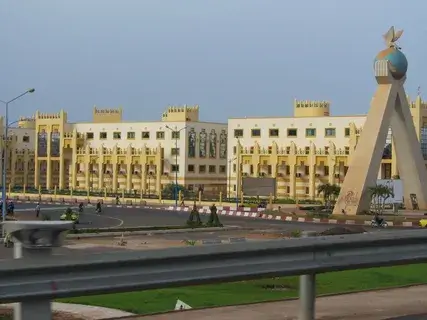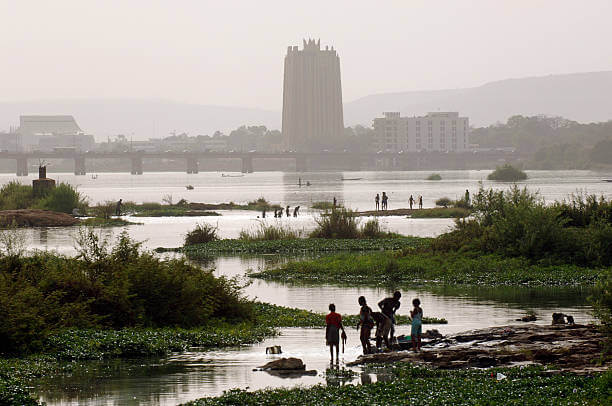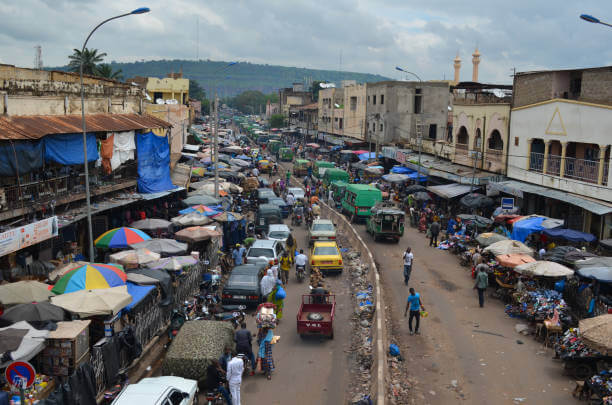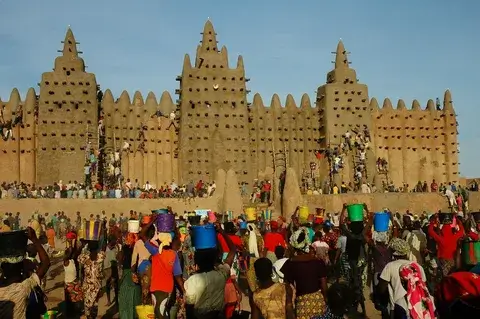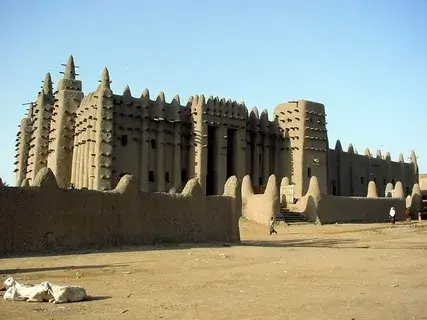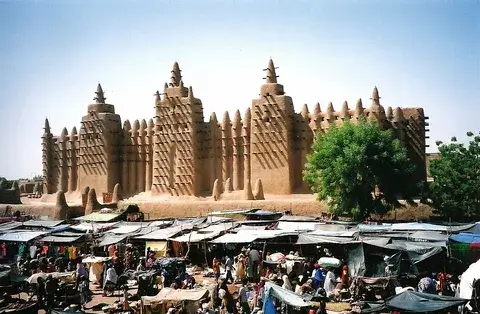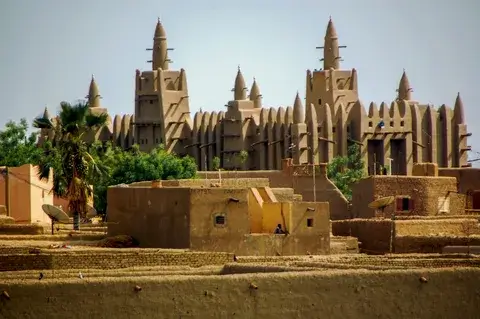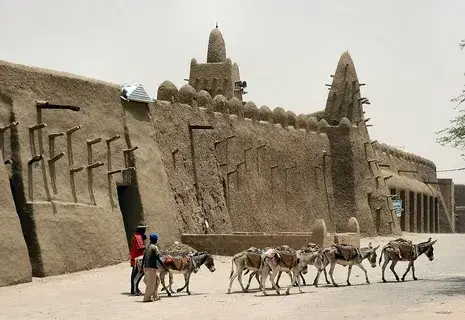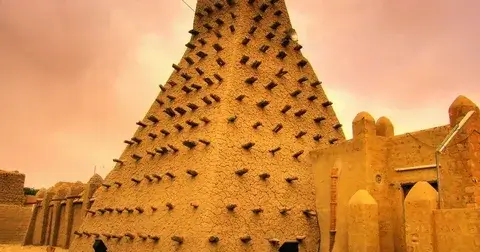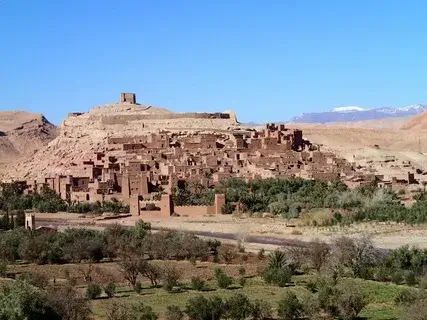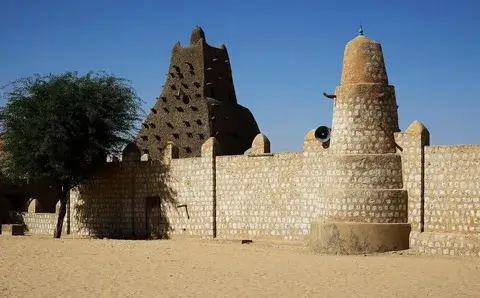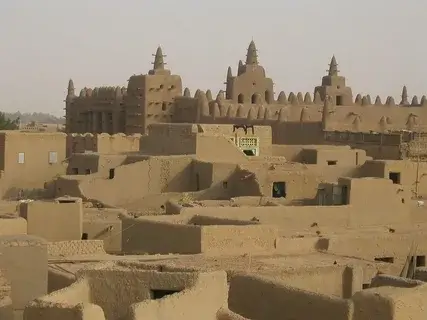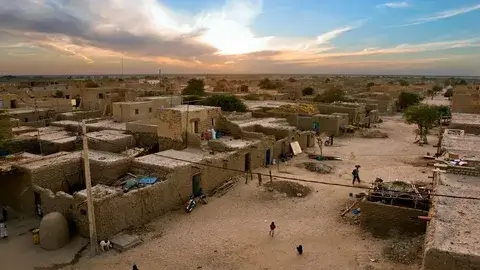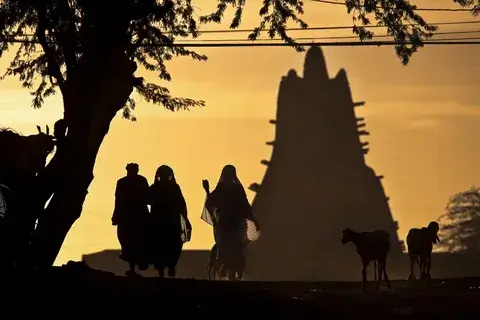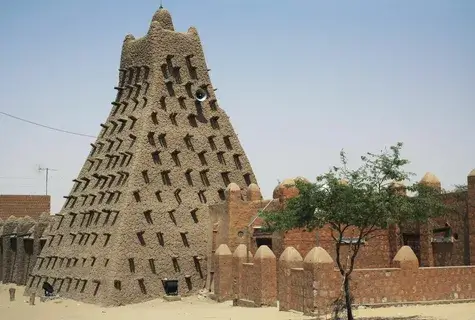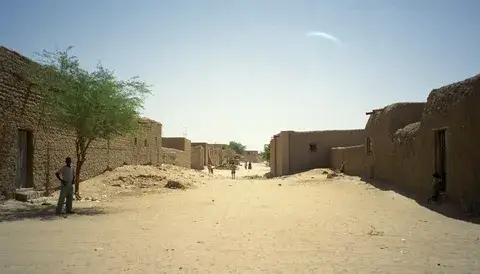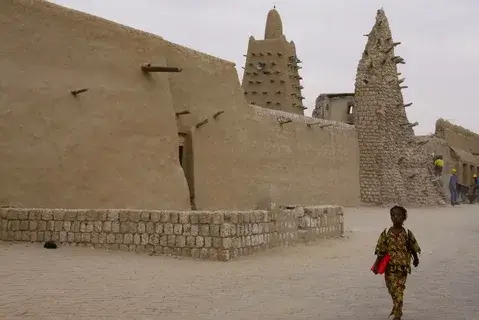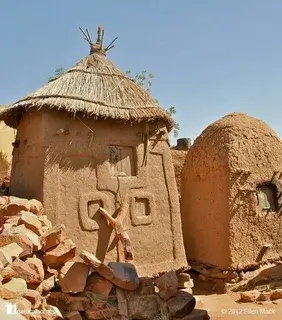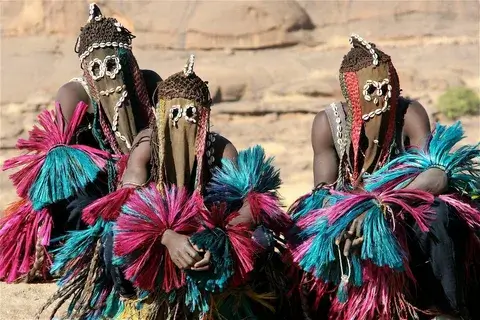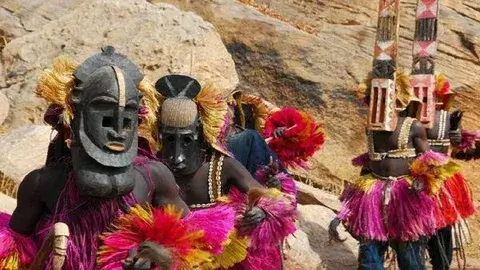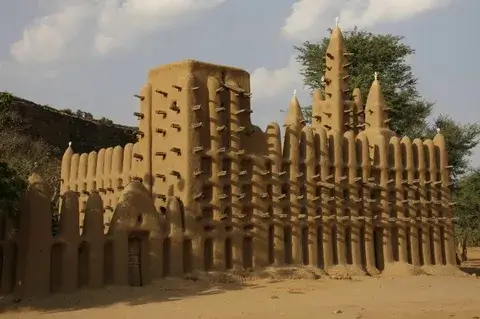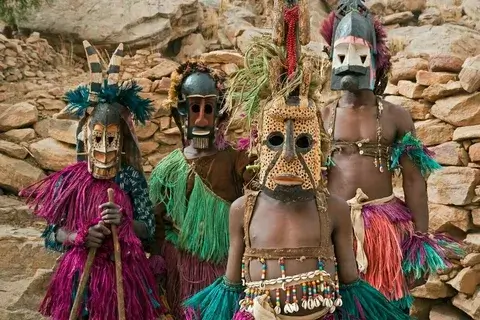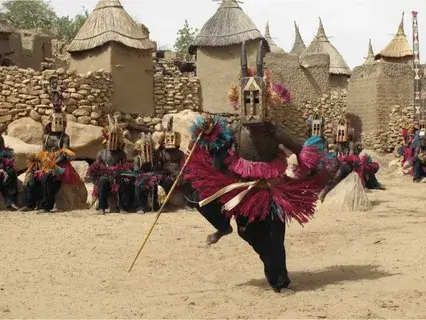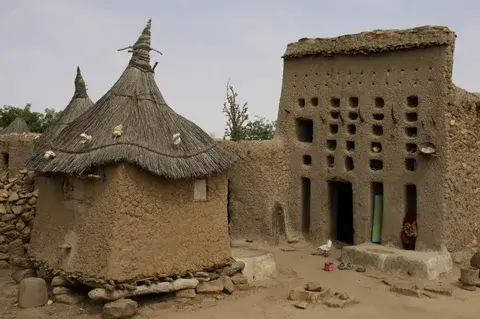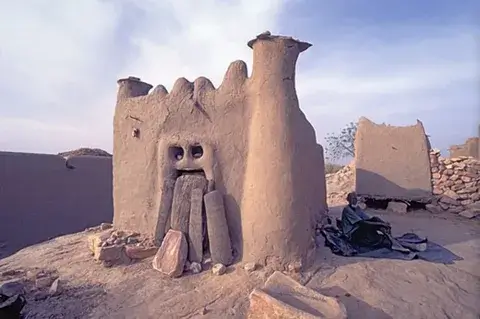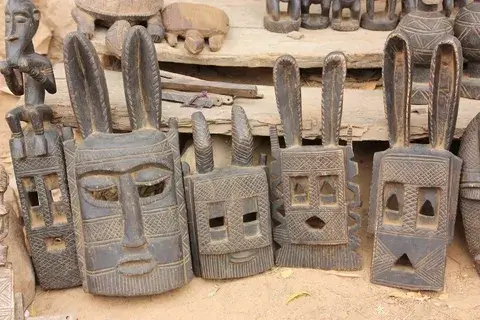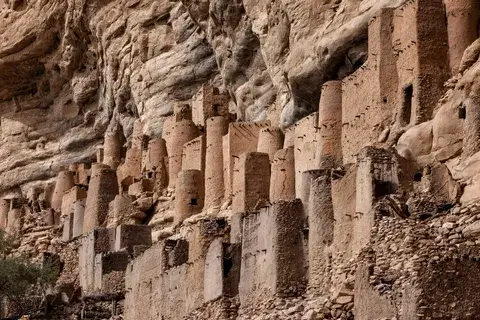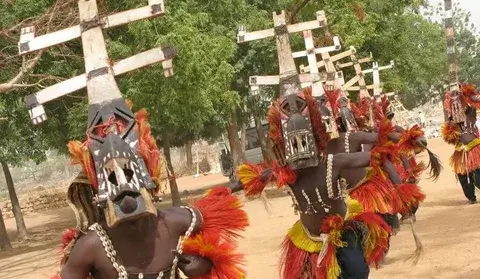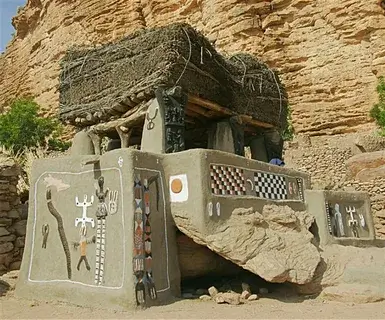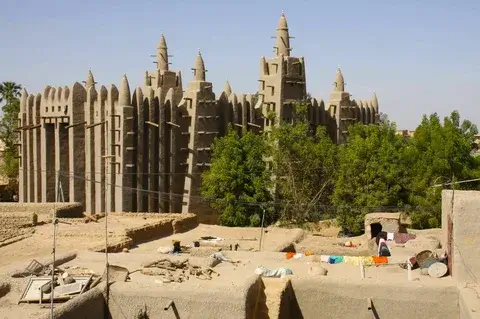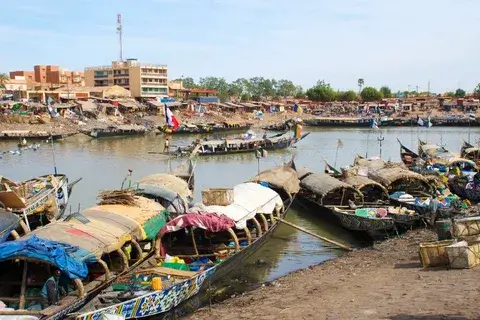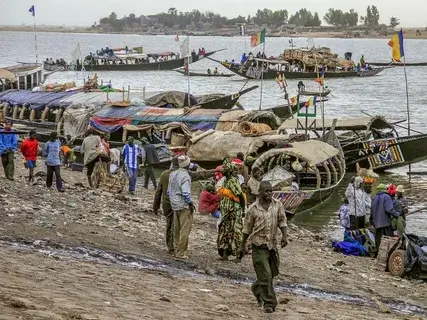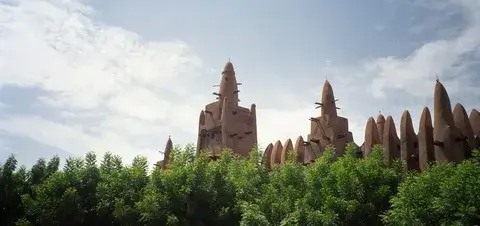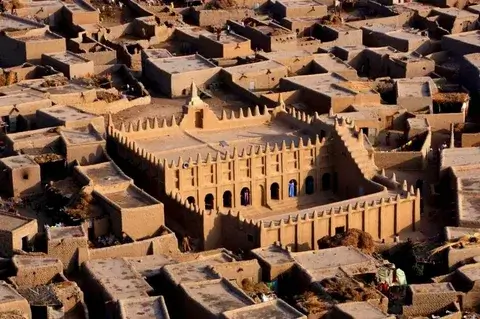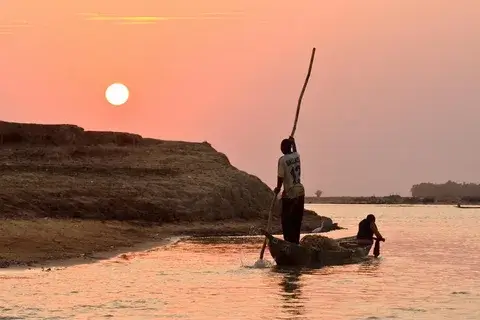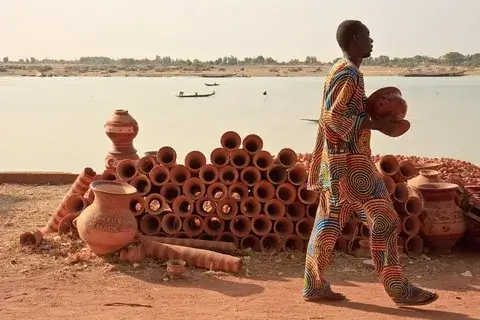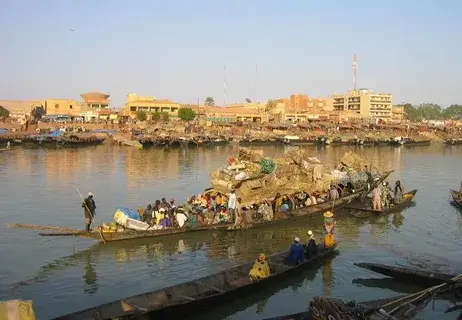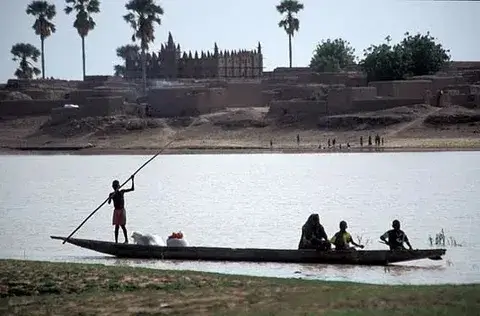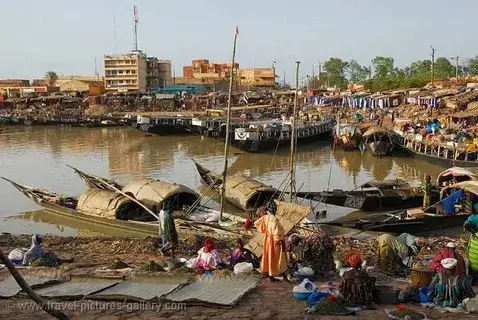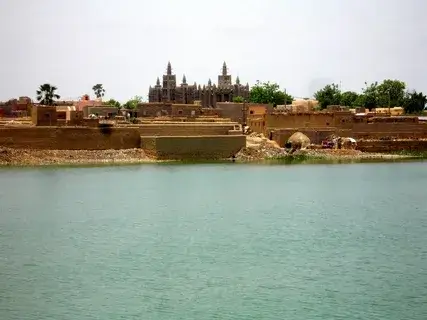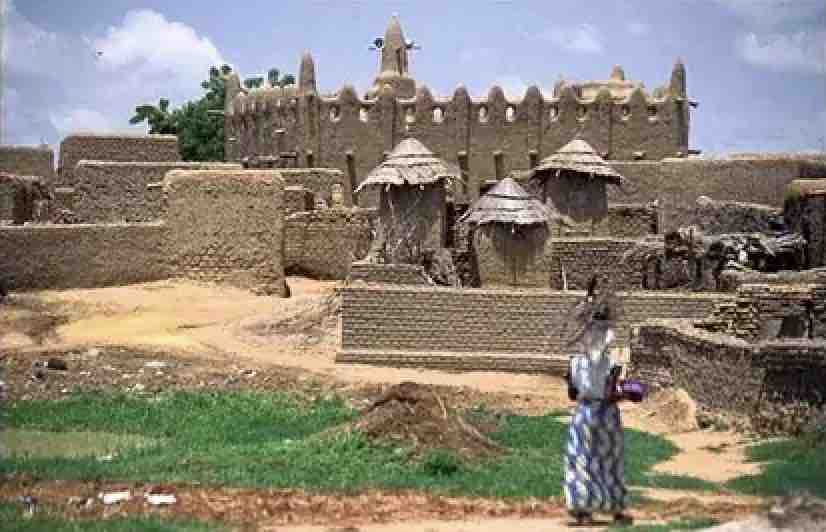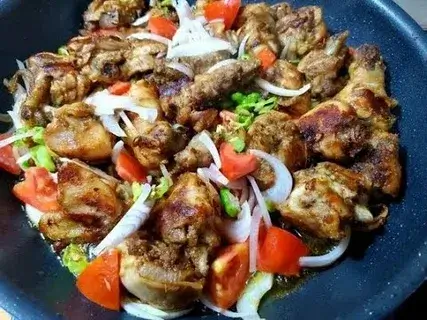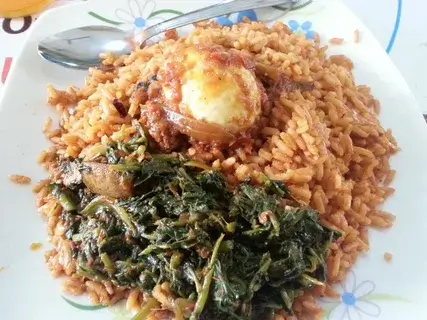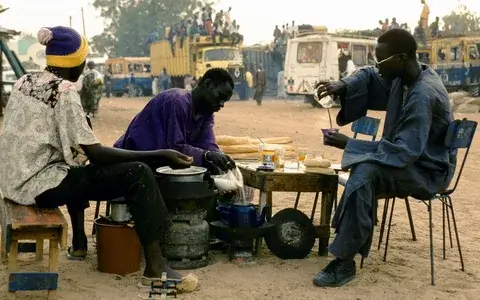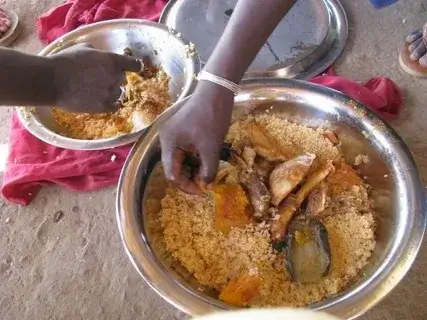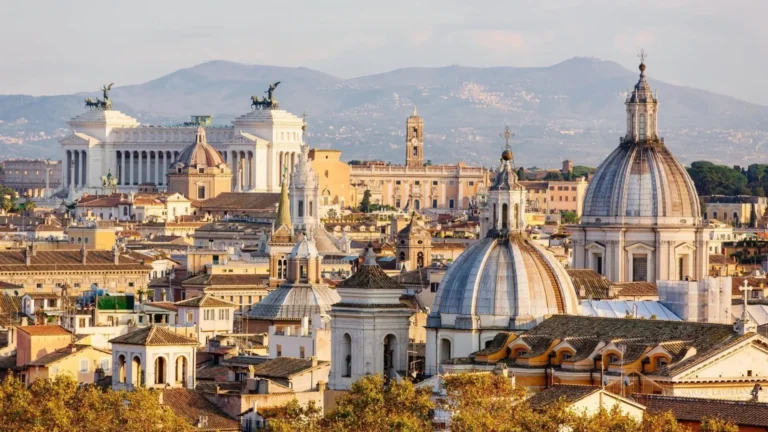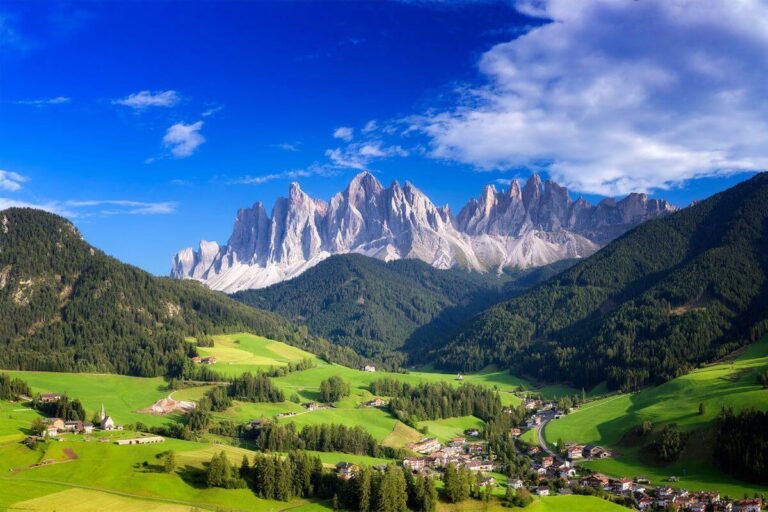Our Top 5 Best Places to Visit in Mali:
Exploring Mali: 5 Unforgettable Adventures

Mali, a land of vibrant cultures and breathtaking landscapes, is an African gem waiting to be discovered. In this blog post, we’ll embark on a journey through the top five places you must visit in Mali, filled with personal experiences and hidden gems.
Map of Mali:

Map Showing Mali Location in Africa:

Countries Bordering Mali:
Mali is a landlocked country in West Africa, bordered by Algeria in north, by Niger in east, by Burkina Faso and Cote d’Ivoire in the south, by Guinea in the south-west, and by Senegal and Mauritania in the west. Mali is 3.5 times the size of Germany, or almost twice the size of the U.S. state of Texas. Its capital and largest city is Bamako. Mali has 13 official languages, of which Bambara is the most spoken one. The population of Mali is estimated to be around 23,461,000 in 2023.
Our Top 5 Best Places to Visit in Mali:
1. Bamako – The Lively Capital:


Our adventure begins in Bamako, Mali’s bustling capital, on the banks of the Niger River. Start your day at “Le Hogon,” a local café known for its rich coffee and scrumptious pastries. While in Bamako, explore the bustling Marché Rose for colorful fabrics, handmade crafts, and street food delights.
At sundown, head to the tranquil Parc National du Mali, where locals gather to enjoy the evening breeze. Don’t forget to try the delicious grilled fish from the food vendors here.
2. Djenné – An Architectural Marvel:


Djenné, with its iconic Great Mosque, is a must-visit. Arrive early and witness the mesmerizing sunrise against the mosque’s mud-brick façade. After exploring the mosque, wander through the town’s narrow streets and discover local artisans crafting intricate mud-brick designs.
For breakfast, savor a traditional Malian dish called “to,” made from millet, at a local eatery. It’s a hearty start to your day.
3. Timbuktu – A Journey into History:


How could we not go to Timbuktu while here, it’s even further away than Tipperary..(yes, I know bad dad joke). Timbuktu is a name that stirs curiosity, and is a city steeped in history. As you explore, you’ll stumble upon hidden libraries that house ancient manuscripts. Take a sunset camel ride on the Sahara’s edge and marvel at the endless dunes.
For a unique dining experience, try “taguella,” a traditional Tuareg bread baked in the sand. Pair it with some mint tea for an authentic taste of the desert.
4. Dogon Country – Trekking and Traditions:


Our adventure takes us to the dramatic cliffs of Dogon Country. Embark on a trek through these breathtaking landscapes, and interact with the Dogon people, known for their unique cliffside villages.
In the evenings, gather around a campfire with locals and listen to the rhythmic beats of traditional drumming and storytelling. It’s a memorable experience that offers a glimpse into the heart of Dogon culture.
5. Mopti – The Venice of Mali:


Our journey ends in Mopti, known as the “Venice of Mali” due to its riverside charm. Begin your day with a boat ride on the Niger River, exploring bustling markets along the riverbanks.
For breakfast, indulge in “foufou,” a popular local dish made from millet or maize, at a riverside café.
As the sun sets, embark on a traditional pinasse boat cruise. Sip on “bissap,” a refreshing hibiscus drink, and watch as the sky transforms into a canvas of colors.
Did we mention the food? EAT!

Mali’s culinary scene is a delightful journey of flavors that reflect its diverse cultures and traditions. A staple in Malian cuisine is “To,” a hearty porridge made from millet, served with a variety of sauces like groundnut sauce or baobab leaf sauce.
You can’t visit Mali without trying “Choukouya,” succulent grilled meat skewers seasoned with a blend of spices. For a taste of the exotic, “Mafé” is a must-try; it’s a peanut stew often prepared with lamb or chicken. Wash it all down with “Bissap,” a refreshing hibiscus-based drink, or the strong and aromatic “Touba Coffee.”
Exploring local markets will introduce you to an array of colorful fruits like mangoes, papayas, and guavas, providing the perfect sweet ending to your Malian culinary adventure.

Essential Things to Know Before Traveling to Mali:
Before embarking on a journey to Mali, it’s essential to be well-prepared and informed. Here are some key things to know:
1. Visa and Entry Requirements:
- Most travelers to Mali require a visa. Ensure you have a valid passport with at least six months of validity left. Check the specific visa requirements for your nationality and obtain it before your trip.
2. Travel Insurance:
- Consider purchasing comprehensive travel insurance that covers medical emergencies, trip cancellations, and unexpected events.
3. Vaccinations and Health Precautions:
- Consult a travel clinic or healthcare provider well in advance to discuss necessary vaccinations, including yellow fever, and malaria prophylaxis. Carry essential medications and a first-aid kit.
4. Safety and Security:
- Research the current security situation in Mali before your trip. Some regions, especially in the north, may have travel advisories due to security concerns. Stay updated on the latest news and follow any government travel advisories.
5. Currency and Banking:
- The official currency is the West African CFA Franc (XOF). Credit cards are not widely accepted, so carry cash. ATMs are available in major cities, but it’s a good idea to have some cash on hand.
6. Language:
- French is the official language, and Bambara is widely spoken. Learning a few basic French phrases can be very helpful, especially outside major cities.
7. Local Customs and Culture:
- Mali is a predominantly Muslim country, so it’s important to respect local customs. Dress modestly, especially in rural areas and religious sites. Always ask for permission before taking photos of people.
8. Climate and Packing:
- Mali has a hot and dry climate, so pack lightweight, breathable clothing. Don’t forget essentials like sunscreen, a hat, and sunglasses. If you plan to visit during the harmattan season (dry and dusty), consider a face mask to protect against dust.
9. Transportation:
- Mali’s transportation infrastructure can be limited outside major cities. Plan your routes and transportation in advance, especially if you’re traveling to remote areas. Be prepared for long journeys on bumpy roads.
10. Accommodation:
– While major cities like Bamako offer a range of accommodations, options may be limited in remote areas. Make reservations in advance, and be prepared for basic facilities in some places.
11. Local Cuisine:
– Malian cuisine is diverse, with dishes like “To” (millet porridge) and “Choukouya” (grilled meat skewers) being popular. Try local specialties but be cautious with street food to avoid foodborne illnesses.
12. Photography:
– Always ask for permission before taking photos of people, especially in rural areas. Some communities may have specific beliefs about photography.
13. Electricity:
– Mali uses European-style two-pin sockets and operates on 220-240V. Bring suitable adapters and voltage converters if necessary.
14. Time Zone:
– Mali is in the Greenwich Mean Time (GMT) zone.
By being prepared and informed, you can make the most of your journey through Mali while staying safe and respectful of local customs and culture.
How to Get to Mali:
Getting to Mali typically involves flying into Bamako, the capital and largest city. Here are the main steps to get to Mali:
1. Passport and Visa:
- Ensure that your passport is valid for at least six months beyond your intended date of departure. Check the visa requirements for Mali based on your nationality and obtain the necessary visa in advance.
2. Choose Your Airport:
- The main international gateway to Mali is Bamako-Sénou International Airport (BKO). Most international flights arrive here. If you plan to visit northern regions, you may need to arrange domestic flights or overland transportation.
3. Book Your Flight:
- Research and book your international flight to Bamako. Major airlines and carriers from Europe, Africa, and other parts of the world offer flights to Bamako.
4. Vaccinations and Health Precautions:
- Visit a travel clinic or healthcare provider well in advance to ensure you have the required vaccinations and medications, including yellow fever and malaria prophylaxis.
5. Arrange Travel Insurance:
- Consider purchasing comprehensive travel insurance that covers medical emergencies, trip cancellations, and unforeseen events.
6. Check Visa Requirements:
- Confirm that you have the necessary visa and other entry requirements for Mali. These requirements can vary based on your nationality.
7. Travel Itinerary:
- Plan your travel itinerary within Mali, especially if you intend to visit multiple cities or regions. Domestic flights, buses, and private transportation are options for getting around.
8. Arrival in Bamako:
- When you arrive at Bamako-Sénou International Airport, go through immigration and customs. Make sure to have all required travel documents, including your visa and passport.
9. Transportation from the Airport:
- Arrange transportation from the airport to your accommodation in Bamako in advance. Most hotels offer airport transfers, or you can use official taxi services.
10. Domestic Travel:
– If your destination in Mali is outside of Bamako, you’ll need to arrange further transportation. Domestic flights are available to major cities like Mopti, Timbuktu, and Gao. Alternatively, buses and private transportation are options for overland travel.
11. Check Travel Advisories:
– Before your trip, check the latest travel advisories and safety information for Mali, especially if you plan to visit remote or northern areas.
12. Currency and Banking:
– Upon arrival, consider exchanging some currency at the airport or using an ATM to obtain local currency (West African CFA Franc, XOF).
13. Local Customs and Language:
– Familiarize yourself with local customs and culture, and be respectful of local traditions. French is the official language, so knowing some basic French phrases can be helpful.
By following these steps and conducting thorough research, you can ensure a smooth journey to Mali and a memorable experience exploring this West African nation.
How to Get Around Mali:
Getting around Mali can be an adventure in itself, as the country’s transportation infrastructure can vary significantly from urban to rural areas. Here are some options for getting around Mali:
1. Domestic Flights:
- Mali has several domestic airports, making air travel a convenient option for long distances. Airlines like Air Mali and MaliJet offer domestic flights. Common routes include Bamako to Mopti, Timbuktu, Gao, and other major cities.
2. Buses and Bush Taxis:
- Buses and bush taxis are common for overland travel between cities. These are often shared vehicles that can be quite crowded. In Bamako, you can find bus stations serving various destinations. For bush taxis, you might need to negotiate prices and schedules.
3. River Transport:
- In regions near rivers like the Niger River, river transport is an option. Traditional pinasse boats are used for passenger travel on rivers.
4. Car Rentals:
- Renting a car can be an option, especially if you plan to explore remote areas. Be aware that road conditions can vary, and some areas may require 4×4 vehicles.
5. Motorbikes and Scooters:
- In some cities and towns, you can rent motorbikes or scooters for local transportation. Always wear a helmet and drive cautiously.
6. Taxis:
- In major cities like Bamako, taxis are readily available. Be sure to agree on the fare before starting the trip, as most taxis do not use meters.
7. Horse-Drawn Carriages and Donkey Carts:
- In some smaller towns and rural areas, you might come across traditional horse-drawn carriages or donkey carts used for short-distance travel.
8. Walking:
- Within cities and towns, especially in the capital Bamako, walking can be a practical way to get around. Just be prepared for hot weather, and take necessary precautions.
9. Tour Operators and Guided Tours:
- If you plan to explore specific regions or participate in activities like trekking in Dogon Country, consider booking with a reputable tour operator. They can provide transportation and guidance for your journey.
10. Safety Considerations:
– Check the latest safety information and travel advisories before embarking on your journey, especially if you plan to travel to northern regions where security conditions can change.
Keep in mind that transportation options may be limited in remote or less touristy areas, so it’s essential to plan your itinerary carefully and be flexible with your travel arrangements. Additionally, be prepared for long travel times and challenging road conditions, particularly in rural parts of Mali.
FAQ – Our Top 5 Best Places to Visit in Mali and Traveling to Mali in General
Traveling to Mali: Frequently Asked Questions
Planning a trip to Mali? Here are some common questions and answers to help you prepare for your journey to this West African nation:
1. Do I need a visa to visit Mali?
- Most travelers to Mali require a visa. Check the visa requirements for your nationality and obtain it before your trip. Ensure your passport has at least six months of validity.
2. Is Mali safe for tourists?
- While Mali has experienced security challenges in certain regions, many areas are safe for tourists. Always check the latest travel advisories and follow local advice and guidelines.
3. What vaccinations do I need for Mali?
- Yellow fever vaccination is required for entry into Mali. Additionally, consult a travel clinic or healthcare provider for recommended vaccinations, including malaria prophylaxis.
4. What is the best time to visit Mali?
- The dry season from November to February is the most comfortable time to visit Mali, with cooler temperatures. However, cultural festivals and events occur throughout the year, so consider your interests when planning your trip.
5. What currency is used in Mali?
- The official currency is the West African CFA Franc (XOF). Credit cards are not widely accepted, so it’s essential to carry cash. ATMs are available in major cities.
6. What languages are spoken in Mali?
- French is the official language, and Bambara is widely spoken. Learning some basic French phrases can be helpful, especially outside major cities.
7. What should I wear in Mali?
- Dress modestly, especially in rural areas and when visiting religious sites. Lightweight, breathable clothing is ideal due to Mali’s hot climate. Pack sunscreen, a hat, and sunglasses.
8. How do I get around Mali?
- Domestic flights, buses, bush taxis, and river transport are common modes of transportation. Plan your routes and transportation in advance, especially if you’re traveling to remote areas.
9. What should I know about local customs and culture?
- Mali is predominantly Muslim, so respect local customs. Always ask for permission before taking photos of people, especially in rural areas.
10. Is tap water safe to drink in Mali?
– It’s generally recommended to drink bottled water in Mali to avoid waterborne illnesses. Be cautious with food and beverages from street vendors.
11. Are there any specific safety precautions I should take?
– Check the latest travel advisories and stay informed about the security situation, especially if traveling to remote areas. Register with your embassy or consulate for safety updates.
12. What are some must-visit places in Mali?
– Mali offers diverse attractions, including Bamako, Djenné, Timbuktu, Dogon Country, and the Niger River. Explore historic sites, cultural festivals, and breathtaking landscapes.
13. Can I exchange money in Mali?
– Currency exchange services are available in banks, exchange bureaus, and some hotels. US dollars and euros are often accepted for exchange.
14. Do I need a guide or tour operator in Mali?
– Hiring a local guide or booking a guided tour can enhance your experience, especially if you plan to visit remote or culturally significant areas.
15. What should I know about Mali’s cuisine?
– Malian cuisine includes dishes like “To” (millet porridge), “Choukouya” (grilled meat skewers), and “Mafé” (peanut stew). Be cautious with street food to avoid foodborne illnesses.
Remember that Mali is a unique destination with its own charm and challenges. Preparing in advance and respecting local customs will help you have a rewarding and memorable experience in this West African nation.
Best Places to Visit in Mali: Frequently Asked Questions
Frequently Asked Questions (FAQ) About Places to Visit in Mali
Exploring Mali’s diverse landscapes and cultural heritage is an adventure of a lifetime. Here are some common questions and answers about the top places to visit in Mali:
1. What are the must-visit places in Mali?
- Mali offers a range of attractions, including Bamako, Djenné, Timbuktu, Dogon Country, and the Niger River. Each place has its unique charm and cultural significance.
2. Is Timbuktu a real place, and can I visit it?
- Yes, Timbuktu is a real historical city in Mali. While it has faced security challenges in recent years, it’s still possible to visit with careful planning and by following travel advisories.
3. What can I see and do in Bamako, the capital of Mali?
- Bamako offers a blend of modern and traditional experiences. Visit the National Museum, explore local markets like Marché Rose, and enjoy vibrant nightlife.
4. What is Dogon Country known for?
- Dogon Country is famous for its dramatic cliffs, traditional villages, and rich cultural heritage. It’s a UNESCO World Heritage site, and you can hike through the area, staying with local families along the way.
5. Are there any cultural festivals in Mali worth attending?
- Yes, Mali hosts various cultural festivals throughout the year. The Festival au Désert in Timbuktu and the Segou Festival are well-known events that showcase music, dance, and traditional art.
6. Is Djenné known for its architecture?
- Djenné is renowned for its stunning architecture, including the Great Mosque, the largest adobe structure in the world. The old town features narrow alleys and traditional mud-brick buildings.
7. What should I know about the Niger River in Mali?
- The Niger River offers opportunities for boat trips and scenic views. You can explore riverside towns and enjoy sundown cruises on the river.
8. Can I visit the Sahara Desert in Mali?
- While Mali shares a border with the Sahara Desert, most travelers explore the desert from neighboring countries like Niger or Burkina Faso due to security concerns in Mali’s northern regions.
9. Is it safe to travel to Mali’s northern regions?
- Some northern regions have experienced security challenges, and travel advisories may be in place. Check the latest safety information and consider guided tours for added security.
10. What should I know about the cultural etiquette in Mali?
– Mali is predominantly Muslim, so respect local customs. Dress modestly, especially in rural areas and religious sites. Always ask for permission before taking photos of people.
11. Are there any unique experiences in Mali’s rural areas?
– Yes, staying in traditional villages in Dogon Country, participating in local festivals, and enjoying traditional Malian music performances are unique experiences you can have in rural Mali.
12. What should I know about Mali’s cuisine?
– Malian cuisine includes dishes like “To” (millet porridge), “Choukouya” (grilled meat skewers), and “Mafé” (peanut stew). Be sure to try local specialties but exercise caution with street food.
Mali is a destination rich in culture, history, and natural beauty. Whether you’re interested in exploring ancient cities, hiking through dramatic landscapes, or immersing yourself in vibrant festivals, Mali has something to offer every traveler. Always stay informed about the latest travel advisories to ensure a safe and enjoyable journey.
You want more on Places to visit in Mali? ⬇️ ⬇️ ⬇️
Our Top 5 Best Places to Visit in Mali – Final Thoughts:
Mali is a land of captivating stories, vibrant cultures, and enchanting landscapes. As you explore these five unique destinations, you’ll discover the heart and soul of this remarkable country.
So, pack your bags and get ready for an adventure like no other in Mali!

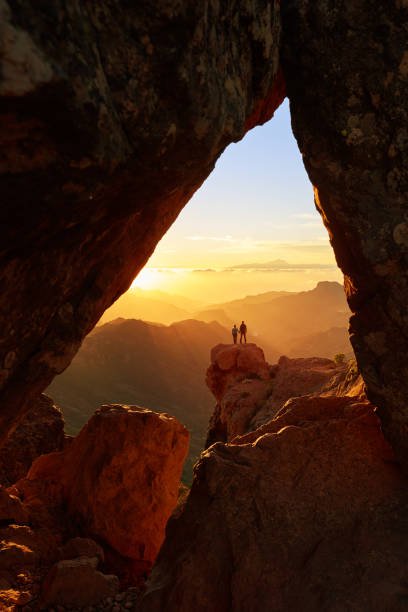
Best Places to Visit in Spain 2023
Spain, a country rich in history, culture, and breathtaking landscapes, beckons travelers with its vibrant cities, stunning beaches, and captivating architecture. From the enchanting streets of Barcelona to the sun-kissed shores of the Costa del Sol, Spain offers a diverse array of destinations to explore..

Europe: A Tapestry of Diversity, Culture and Adventure
Europe, a continent as diverse as it is beautiful, is a traveler’s dream come true. From the snow-capped peaks of the Alps to the sun-kissed beaches of the Mediterranean, Europe offers an enchanting mix of experiences for every type of traveler. Join us as we embark on a journey through the heart of Europe, discovering…

Our Top 5 Best Places to Visit in Kuwait
Discovering Kuwait: Journey Through its Hidden Treasures Hey fellow wanderlusters, let’s dive into Kuwait’s kaleidoscope of culture, where the past meets modernity. I’ve uncovered five must-visit spots for the young and adventurous traveler. From sipping on sweet tea under Bedouin tents to catching epic sunsets, Kuwait is an adventure waiting to happen. Map of Kuwait…

Our Top 5 Best Places to Visit in Dominica
Dominica: Where Adventure Meets Paradise Welcome to Dominica, the “Nature Island” of the Caribbean. If you’re seeking a destination that’s off the beaten path, brimming with natural wonders and adventure, you’ve found it. Here, you’ll explore lush rainforests, soak in rejuvenating hot springs, and dive into sparkling turquoise waters. Let’s embark on a journey to…
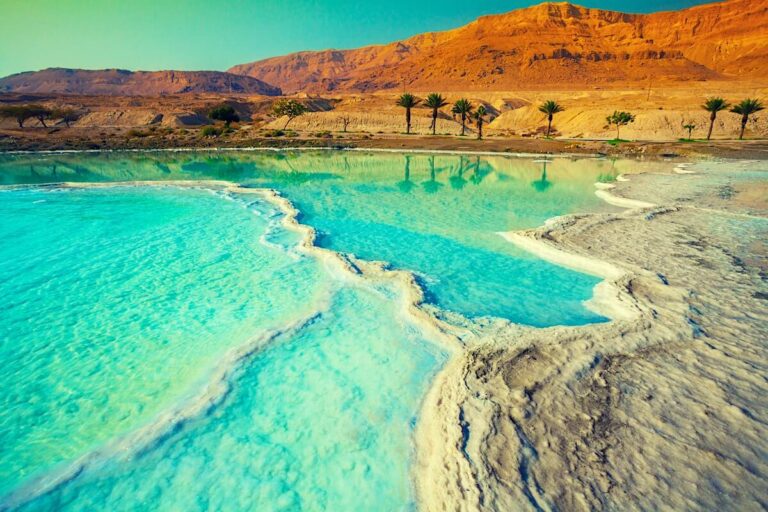
Our Top 5 Best Places to Visit in Jordan
My Journey Through Jordan’s Top 5 Destinations If you’re ready to dive into a world of ancient wonders, surreal landscapes, and incredible experiences, then Jordan is calling your name. Let me take you on a ride through my unforgettable journey as I uncovered the 5 best places to visit in this captivating country. Map of…

Our Top 5 Best Places to Visit in Lebanon
Lebanon Unveiled: Exploring the Mystique of the Middle East Welcome to the captivating land of Lebanon! Nestled along the Mediterranean Sea, this enchanting country is a treasure trove of history, culture, and natural beauty. Let’s embark on a journey to discover some of the most mesmerizing places that Lebanon has to offer. Map of Lebanon…
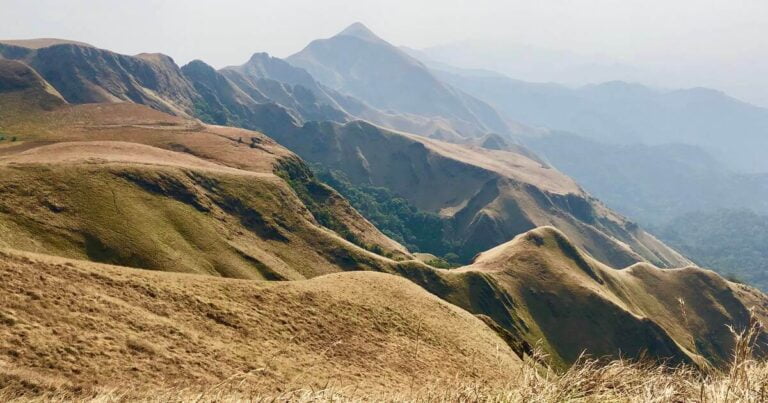
Our Top 5 Best Places to Visit in Guinea
Unveiling Guinea’s Hidden Treasures: 5 Must-Visit Places Are you ready for an off-the-beaten-path adventure in West Africa? Guinea, a hidden gem nestled between Guinea-Bissau, Senegal, Mali, Cote d’Ivoire, Liberia, and Sierra Leone, awaits your discovery. Prepare to be captivated by its vibrant culture, stunning landscapes, and welcoming people as we explore some of the must-visit…
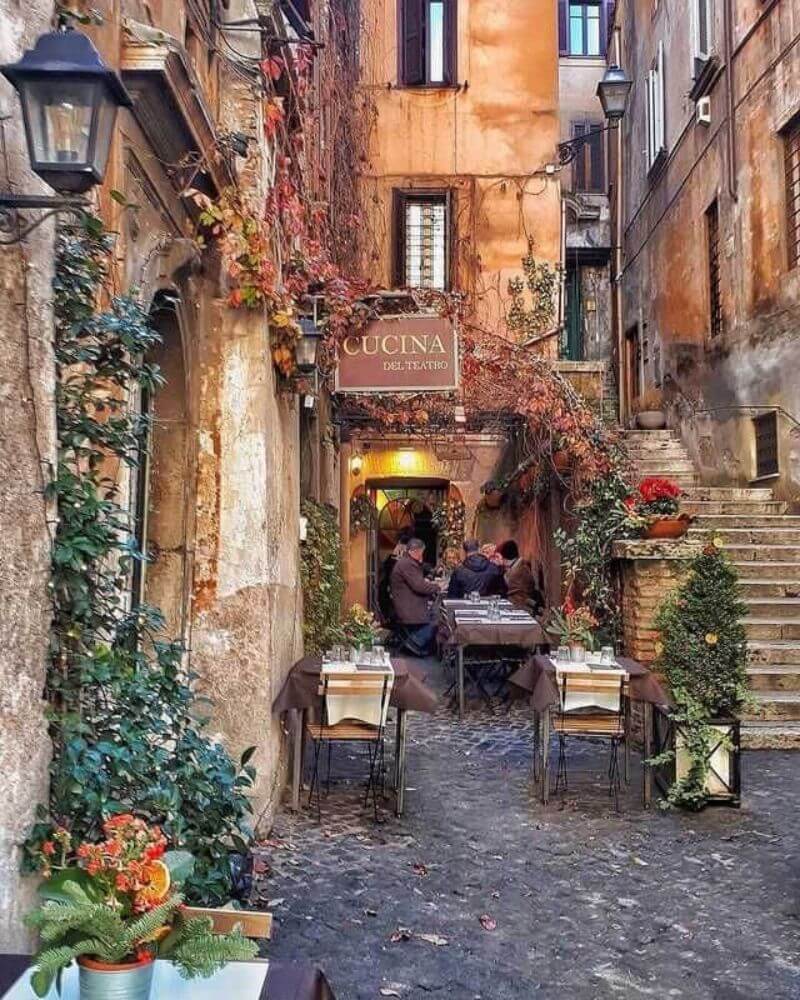
Best Places to Visit in Italy 2023
Italy, a land of romance, rich history, and breathtaking landscapes, beckons travelers with its magnetic allure. From the captivating cities adorned with timeless architecture to the picturesque coastal towns and rolling vineyards, this Mediterranean gem offers a plethora of unforgettable experiences..
Exploring Greece’s Timeless Treasures: Greece Best Places to Visit Top 10
Exploring Italy’s Treasures: The Best Places to Visit in Italy in 2023
Our 10 Best Places to Visit in Venice: Come Explore the Enchanting Floating City
Unveiling the Enchanting Beauty: Our Best Places to Visit in Florence
Our Best Free Places to Visit in New York That are yes, Absolutely FREE!
Our Best 10 Affordable Vacation Destinations if you are on a tight budget.
Our 10 Best Budget Travel Tips: Explore the World Without Draining Your Bank Account.
These are our Top 10 Best Travel Destinations Worldwide 2023
Our Absolute Best list of 10 Less Touristy Places to Travel in Europe 2023
Australia: A Traveler’s Paradise: Best Australian Destinations 2023
Our Top 5 Best Places to Visit in Mali – By David John
5 Best Places to Visit in Mali: Djenné’s Grande Mosque Cover Image Courtesy: ypt
Best Places to Visit in Mali: flickr images licensed under CC BY 2.0
Additional images: adobe · colourbox · istock · pexels · shutterstock · unsplash unless otherwise stated.
Were our Top 5 Best Places to Visit in Mali: helpful to you?
Let us know your thoughts in the comments below..
And if you are looking for a specific piece of information, please do comment below..



